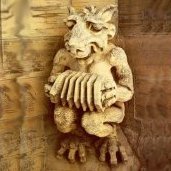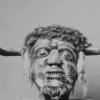-
Posts
4,813 -
Joined
-
Last visited
Profile Information
-
Gender
Male
-
Interests
46-button Hayden Duet Concertina
Morris, English Country, Contra Dance Music
Classical and Early Music
Retired Anesthesiologist
YouTube channel ("Dr. Sleep"):
https://www.youtube.com/@David_Barnert
SoundCloud channel ("Dr. Sleep"):
https://soundcloud.com/dr-sleep-1/tracks -
Location
Albany, NY, USA
Recent Profile Visitors
David Barnert's Achievements

Ineluctable Opinionmaker (6/6)
-

non-standard key signaures in old ABC files...
David Barnert replied to Roger Hare's topic in Teaching and Learning
I was referring to the statement: “the key code should be K: _E ?” and your response that started with the word “Yes.” -

non-standard key signaures in old ABC files...
David Barnert replied to Roger Hare's topic in Teaching and Learning
Not really. The standard is pretty clear. In the header, the key is defined in the K: field using b and # to indicate flat and sharp... ... and the symbols _ and ^ only come into play (in the K: field of the header) when adding accidentals to a key signature: Otherwise, _ and ^ (and 😃 denote flat and sharp (and natural) in the body of the tune: -

non-standard key signaures in old ABC files...
David Barnert replied to Roger Hare's topic in Teaching and Learning
Indeed. Note, I didn’t say the construction was not permitted in the standard, I said the software didn’t know what to do with it. -

non-standard key signaures in old ABC files...
David Barnert replied to Roger Hare's topic in Teaching and Learning
I think this just means that the software doesn’t know what to do with an underscore except in the context of the body of a tune, where it is meaningless unless followed by a note name, in which case it means “flat,” as in the F major scale: F G A _B c d e f -
David Barnert started following What makes a good session , non-standard key signaures in old ABC files... , What I wish I knew before I dove into the concertina pond: and 3 others
-

non-standard key signaures in old ABC files...
David Barnert replied to Roger Hare's topic in Teaching and Learning
I think the former, especially since the underscore is the way to indicate a flat in the body of a tune (but not the header). It would be an understandable mistake to think it might be appropriate to use the underscore to indicate a flat in the header. Note that Bb and Eb are the two most common flat major keys in folk music, which certainly describes both of these tunes. E major is not all that uncommon, but B major, with five sharps, is unlikely. Were both these tunes notated by the same person? Are there any tunes in the collection in flat major keys that have correctly notated K: fields? I suspect the answers are “yes” and “no.” Conceivably possible, but I would think unlikely. -

What makes a good session
David Barnert replied to Randy Stein's topic in General Concertina Discussion
At session, communication is important, and we can’t communicate with each other by talking. That leaves music, eye contact and body language. A face glued to a page of music is therefore at a considerable disadvantage. I’m not saying that sheet music is always inappropriate, but that the goal should be to get past it (and learn how to get past it) with reasonable speed. -

What makes a good session
David Barnert replied to Randy Stein's topic in General Concertina Discussion
The key word here is “appropriate.” The mere ownership of spoons or bones or a bodhran does not make one a session musician. Perhaps not, but they determine the pitch (“We tune to the concertina”). -
Yes, that’s how Pete wrote it, as a waltz. But I’m not hearing a waltz in McCarthy’s video. I knew Pete back then, although I haven’t seen him in decades.
-
https://www.ebay.com/sch/i.html?_sofindtype=4&_nkw=256687057650&LH_PrefLoc=2&rt=nc&LH_Sold=1&LH_Complete=1
-

Concertina sighting: New Yorker Magazine
David Barnert replied to David Barnert's topic in General Concertina Discussion
Somebody told me once (a long time ago, pre-internet) that “Trunkles” meant “Trousers,” although now I can find nothing on the internet that backs this up. Anyway, these might be just the trousers for playing the tune, if not dancing the Morris dance. -

E minor (anglo, harmonic style)
David Barnert replied to Leah Velleman's topic in General Concertina Discussion
Thanks. Still somewhat puzzled... The same note as the previous note (ie., two consecutive instances of the same note played with different buttons and bellows directions) or playing a note in the melody using a different (ie., non-intuitive) button/bellows direction? -

E minor (anglo, harmonic style)
David Barnert replied to Leah Velleman's topic in General Concertina Discussion
Forgive me... As a non-Anglo player reading this thread. I see the word “reversals” in several of the posts, and I’ve never come across it before in the context of concertinas (I play the Hayden Duet). So what does “reversals” mean when talking about playing the Anglo concertina? -

What makes a good session
David Barnert replied to Randy Stein's topic in General Concertina Discussion
Not just you. If it didn’t happen all the time the rule would never have occurred to me. -

What makes a good session
David Barnert replied to Randy Stein's topic in General Concertina Discussion
I agree with all this. While I’m not demanding anything or demeaning sessions that don’t fit the following, sessions I enjoy most have these qualities in common: nobody reading from notation, abundant improvisation, lead being passed around, a good mix of familiar and unfamiliar tunes. My only strict rule: We should limit ourselves to tunes that at least ONE of us knows. (I can’t tell you how many times I’ve had to remind people of that when they try to teach an unfamiliar tune and find they can’t get through it themself).







